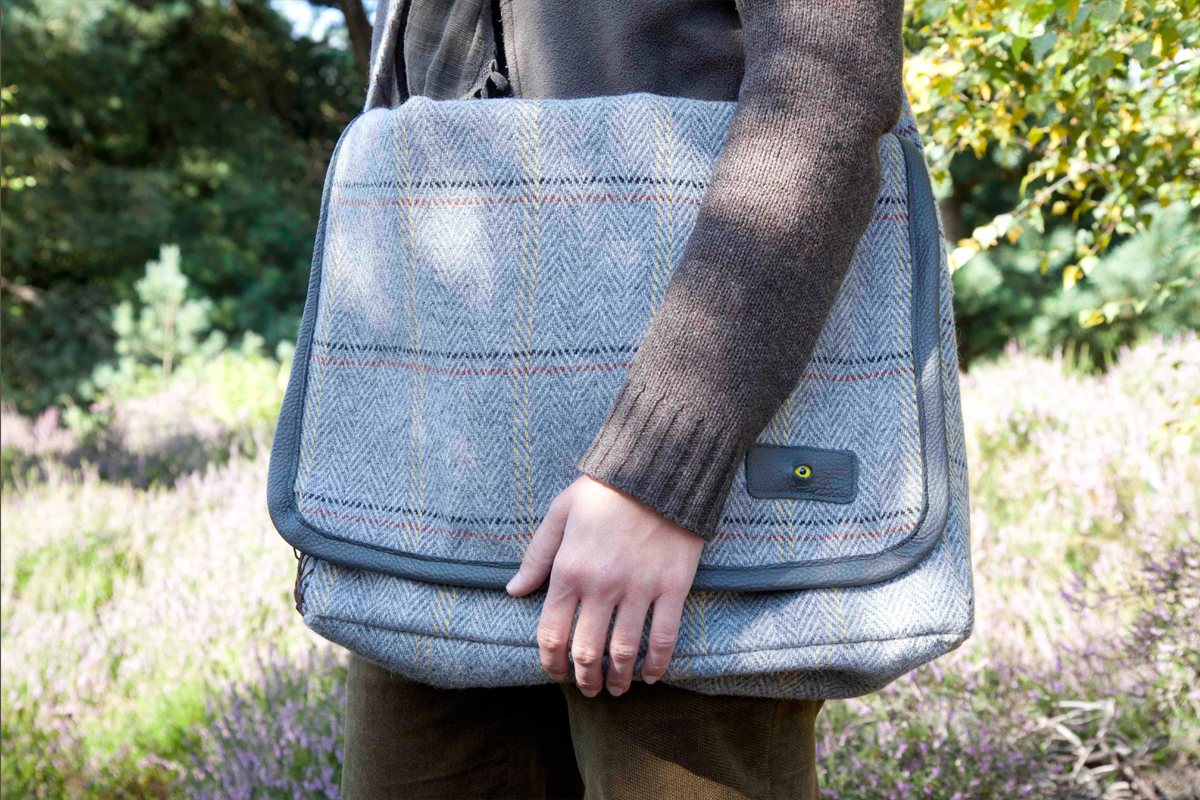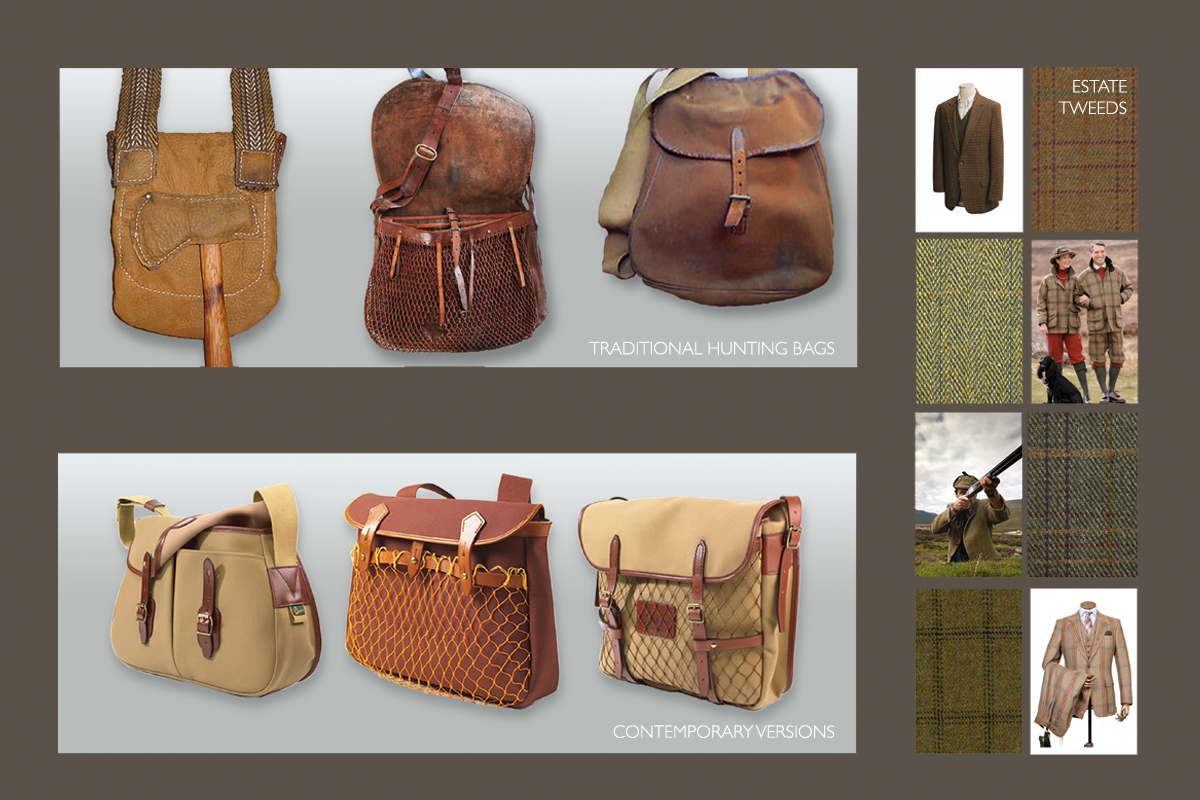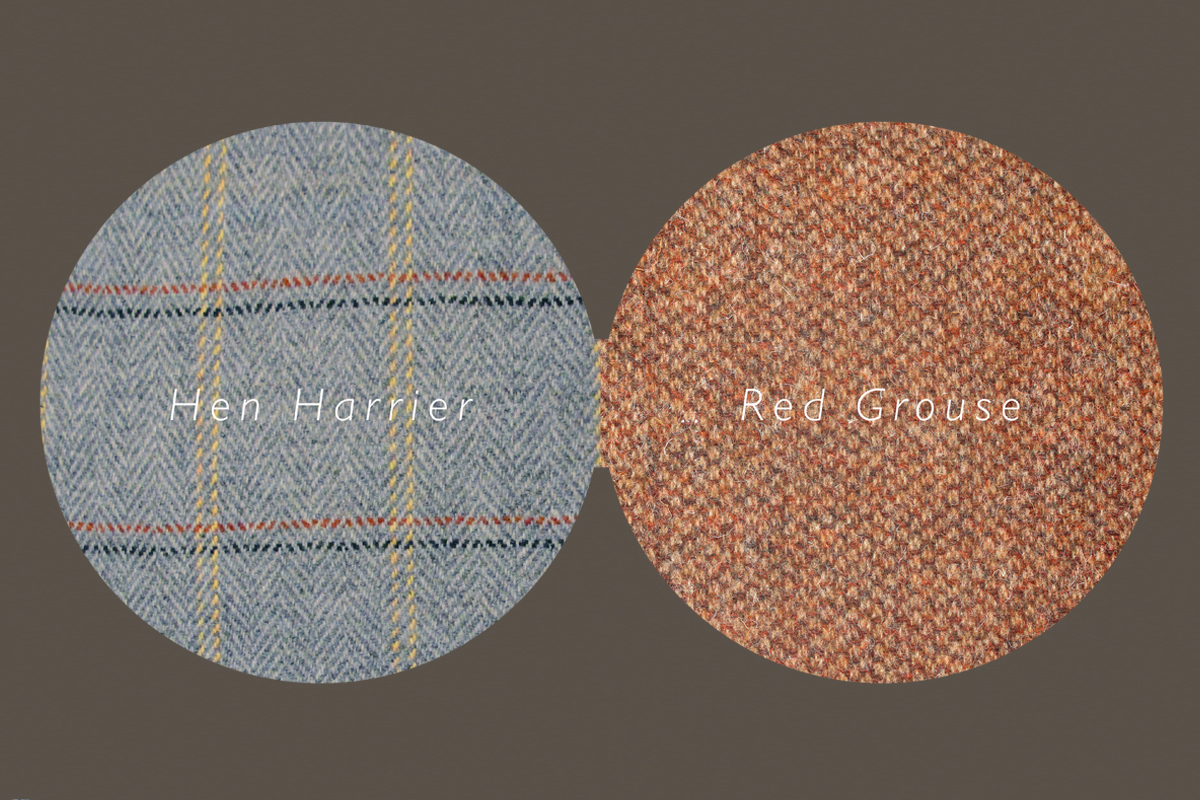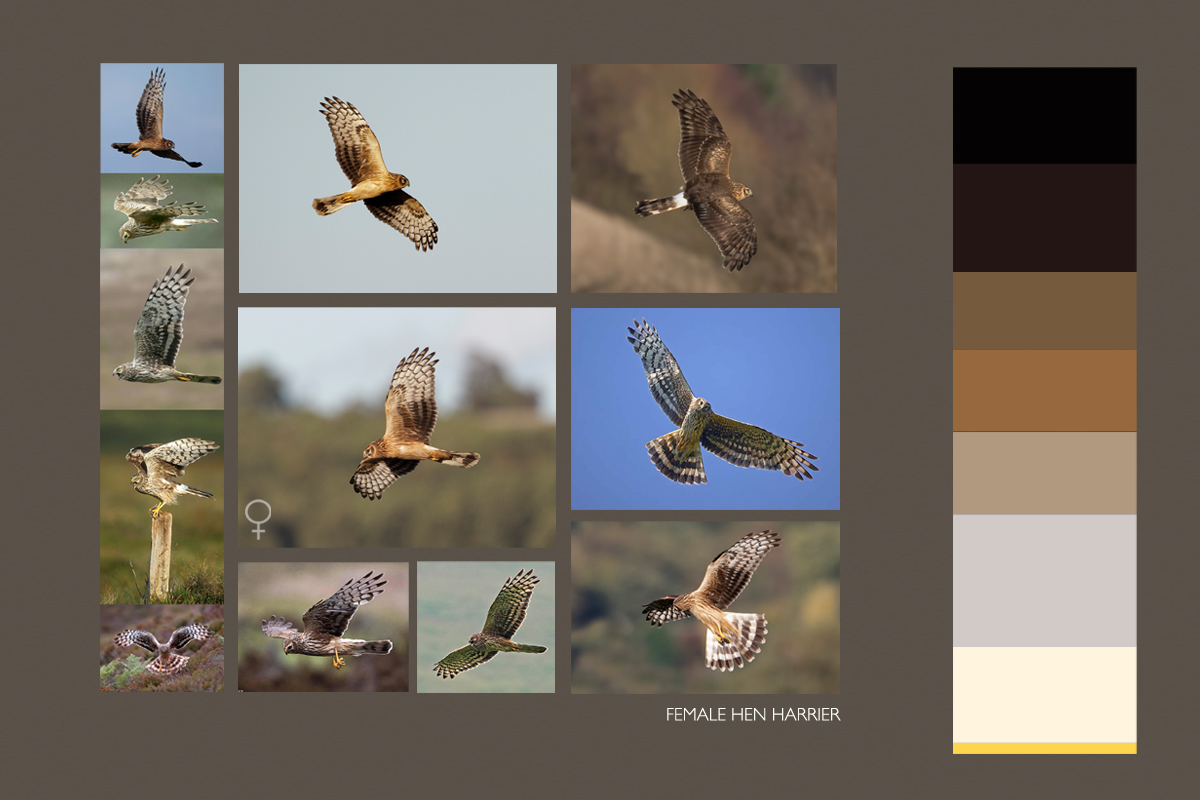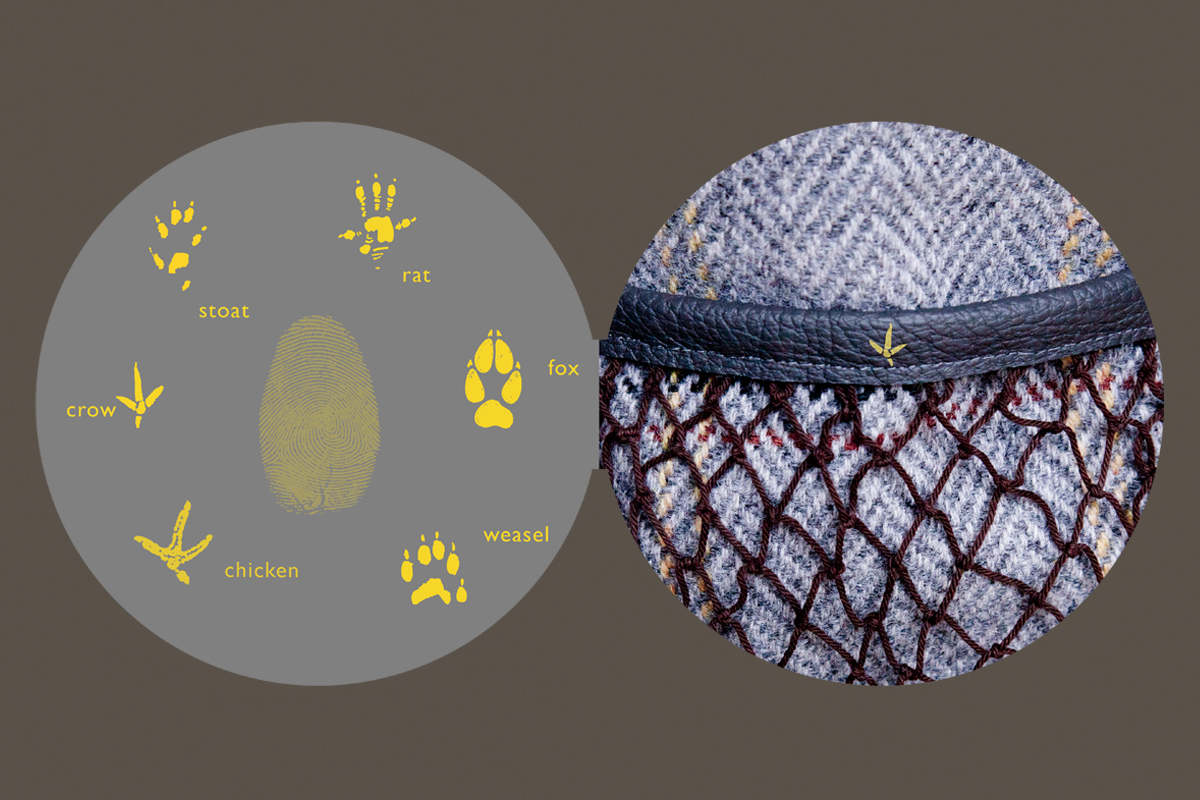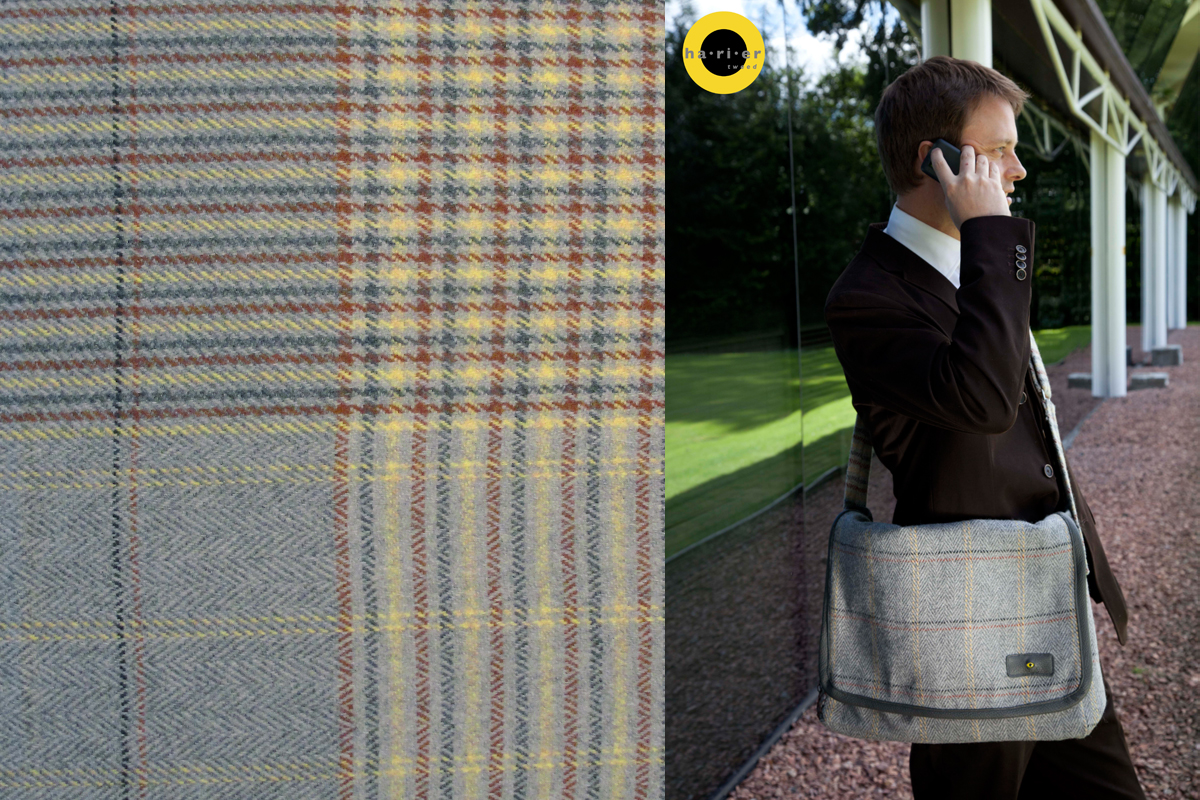Harrier Tweed 2011
The Harrier Tweed Bag is a response to the complex land management issues surrounding sporting estates in Scotland. This bag tells the tale of two birds: the Hen Harrier and the Red Grouse who share large stretches of moorland on various hunting estates in Scotland. The Harrier by nature hunts the grouse and in particular it’s chicks. The hunting estate requires large and healthy populations of grouse to be available for shooting parties; a crucial part of the economy in these remote communities, inevitably a conflict exists between gamekeepers and conversationalists. The Harrier numbers are in decline and are now a protected species, the estate also manages the numbers of other predatory species who threaten grouse numbers: weasels, stoats, crows, foxes etc. are all trapped and culled. A solution of sorts is in place with the introduction of diversionary feeding of the Harrier in the form of make chicks (surplus from the poultry industry) and rats (bread as animal feed).
The Harrier bag borrows from the traditional design of a ghillies bag, but is made from Tweed specially commissioned to reflect the colour pallet of the Hen Harrier: it’s bright yellow eyes and feet, as well as the horizontal banding on the tips of its primary feathers. The bag is lined with rich warm tweed the colour of the Red Grouse. Traditionally these tweeds were made in colours and patterns that were specific to individual estate and families, and were worn by both employers and employees. The six footprints of other animals involved in this tale of predator and pray are also present on and in this bag.
Commissioned by Aberdeen Centre for Environmental Sustainability (ACES) and The Macaulay Institute - For Land Use Research. The tweed woven by Breanish Tweed in The Outer Hebrides.
